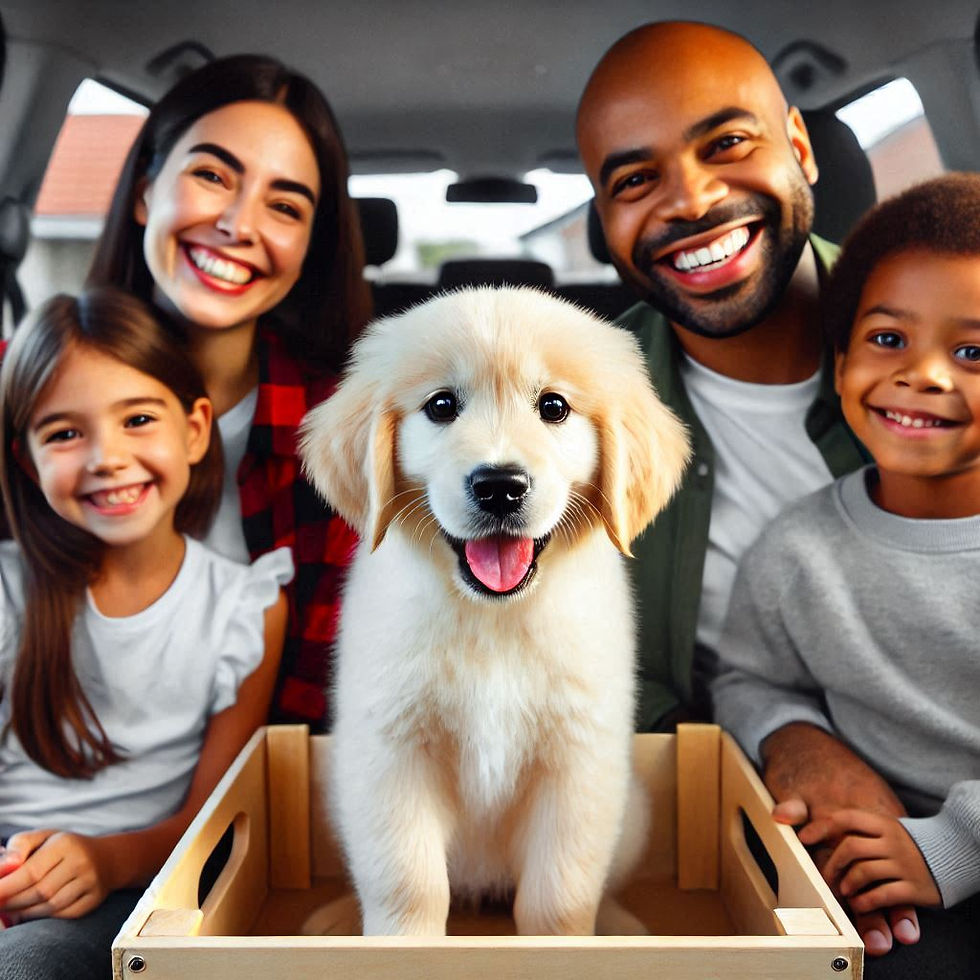How Exactly Do Dogs Learn? Desensitization and Counter Conditioning
- Rebecca Price
- Feb 11
- 1 min read

Desensitization
Desensitization is a process used to reduce a dog's fear or anxiety about a specific stimulus by gradually exposing them to the stimulus at a low level that doesn't provoke a strong reaction. Over time, the exposure is gradually increased as the dog's tolerance improves.
How Desensitization Works:
Identify the Trigger: Determine what causes the dog to react fearfully or anxiously.
Start with Low Level Exposure: Introduce the trigger at a very low level that doesn't cause a strong reaction.
Gradually Increase Exposure: Slowly increase the intensity or proximity of the trigger as the dog becomes more comfortable.
Monitor and Adjust: Pay attention to the dog's reactions and adjust the exposure level as needed to prevent overwhelming the dog.
Repetition and Consistency: Continue the process until the dog can tolerate the full intensity of the trigger without fear or anxiety.
Example of Desensitization:
Fear of Vacuum Cleaner
Step 1: Identify that the dog is afraid of the vacuum cleaner.
Step 2: Start by placing the vacuum cleaner in the same room as the dog while it is turned off. Reward the dog with treats and praise for staying calm.
Step 3: Over several sessions, gradually move the vacuum cleaner closer to the dog, still keeping it turned off. Continue to reward calm behavior.
Step 4: Once the dog is comfortable with the vacuum cleaner being close, turn it on briefly from a distance, rewarding the dog for staying calm.
Step 5: Gradually increase the duration and proximity of the vacuum cleaner being turned on, always rewarding calm behavior.
Step 6: Continue this process until the dog can tolerate the vacuum cleaner being used normally without fear.
Counterconditioning
Counterconditioning involves changing a dog's emotional response to a stimulus by associating the trigger with something positive. This method works by replacing the dog's negative reaction with a positive one through consistent and positive associations.
How Counterconditioning Works:
Identify the Trigger: Determine what causes the dog to react negatively.
Pair with Positive Stimulus: Pair the trigger with something the dog loves, such as treats or play.
Consistent Positive Associations: Each time the dog encounters the trigger, provide the positive stimulus to build a new association.
Gradually Increase Exposure: Similar to desensitization, gradually increase the intensity or proximity of the trigger while maintaining the positive associations.
Repetition and Consistency: Continue the process until the dog's negative reaction is replaced with a positive one.
Example of Counterconditioning:
Fear of Strangers
Step 1: Identify that the dog is afraid of strangers.
Step 2: Pair the presence of a stranger with something positive, such as high-value treats. Have the stranger stand at a distance and toss treats to the dog.
Step 3: Over several sessions, gradually decrease the distance between the stranger and the dog while continuing to provide treats. Ensure that the dog remains comfortable and relaxed.
Step 4: As the dog becomes more comfortable, have the stranger offer treats directly from their hand, reinforcing the positive association.
Step 5: Gradually increase the level of interaction, such as the stranger petting the dog, while continuing to provide positive reinforcement.
Step 6: Continue this process until the dog associates strangers with positive experiences and no longer reacts fearfully.
.png)




Comments